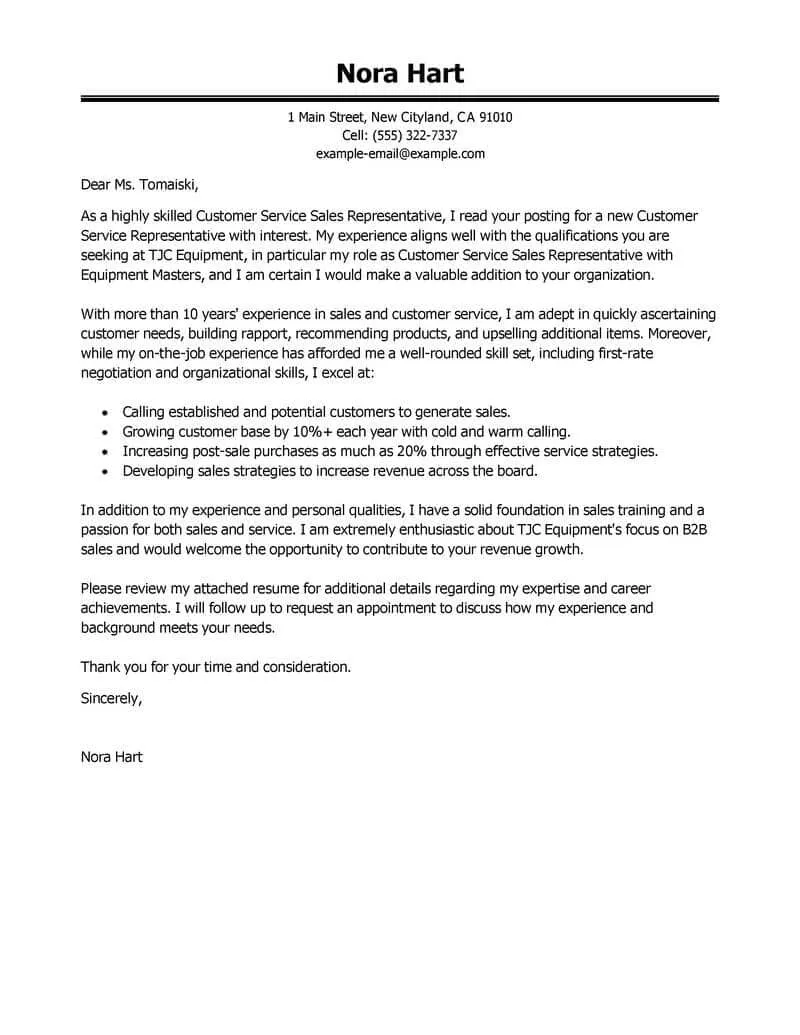Understanding the Importance of a Customer Service Cover Letter
In the competitive job market, a well-crafted customer service cover letter is your secret weapon. It’s not just a formality; it’s your chance to make a strong first impression and stand out from other applicants. While a resume provides a snapshot of your experience and skills, a cover letter allows you to tell a story, connecting your abilities to the specific requirements of the job. It’s where you get to showcase your personality, express your enthusiasm, and demonstrate why you are the perfect fit for the role and the company.
Why a Cover Letter Matters
A customer service cover letter serves several crucial purposes. First, it allows you to provide context to your resume. Explain gaps in employment, highlight specific achievements that align with the job description, and clarify how your skills and experiences translate to the role. Second, it demonstrates your communication skills, a vital asset in customer service. A clear, concise, and well-written letter shows that you can effectively communicate with customers and colleagues. Finally, it reveals your genuine interest in the position. A generic application might get overlooked, but a tailored cover letter shows you’ve taken the time to research the company and understand its needs.
Highlighting Key Skills
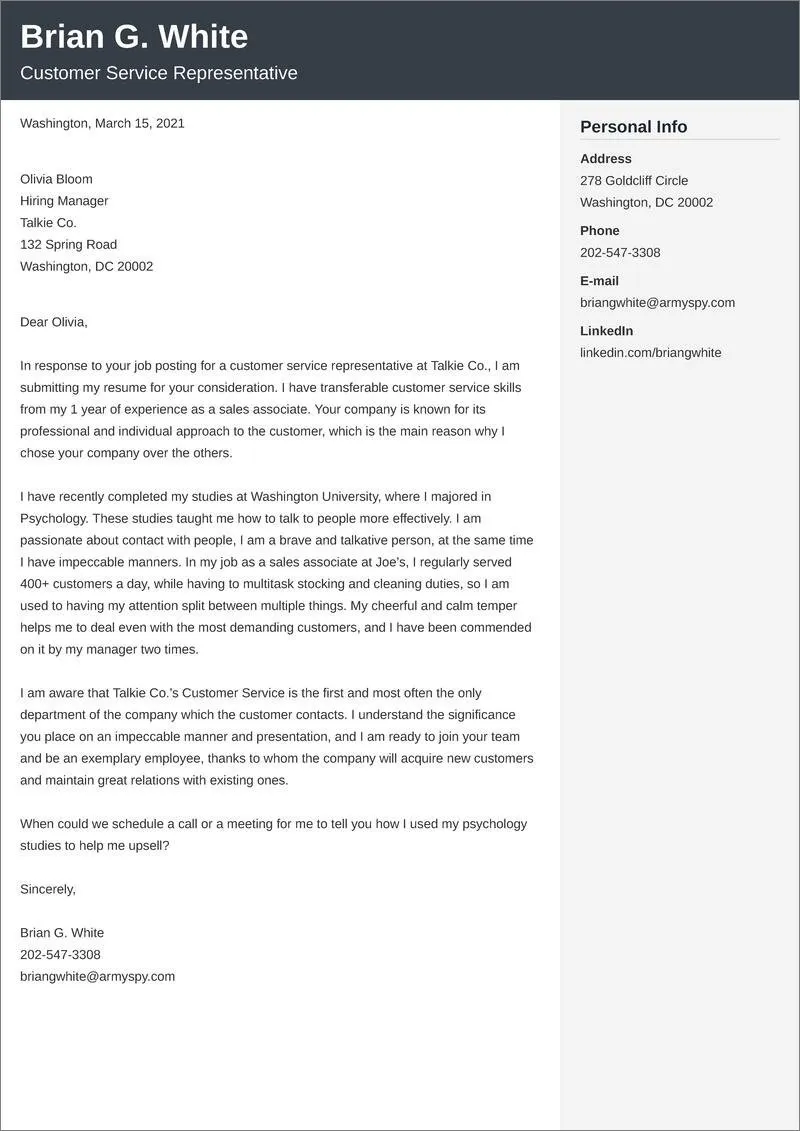
Customer service roles demand a unique blend of skills, and your cover letter is the perfect place to showcase them. Emphasize your active listening abilities, your empathy, and your problem-solving capabilities. Highlight your communication skills, both verbal and written. Mention your ability to remain calm under pressure, your patience, and your positive attitude. Focus on these skills, using specific examples to illustrate how you’ve successfully used them in past roles. Don’t just list skills; demonstrate them through storytelling.
Essential Elements of a Customer Service Cover Letter
Crafting an effective customer service cover letter involves paying attention to several key elements. Each section should be well-structured and designed to create a positive impression. Your cover letter should be clear, concise, and professional. Ensure you address each aspect with precision and tailor it to the specific job you are applying for.
Your Contact Information and the Date
Begin your cover letter with your contact information, including your name, phone number, email address, and optionally, your LinkedIn profile URL. Following this, add the date. This ensures that the hiring manager can easily reach you. The placement of this information is usually at the top of the document, either aligned left or right, depending on your formatting preferences.
Addressing the Hiring Manager
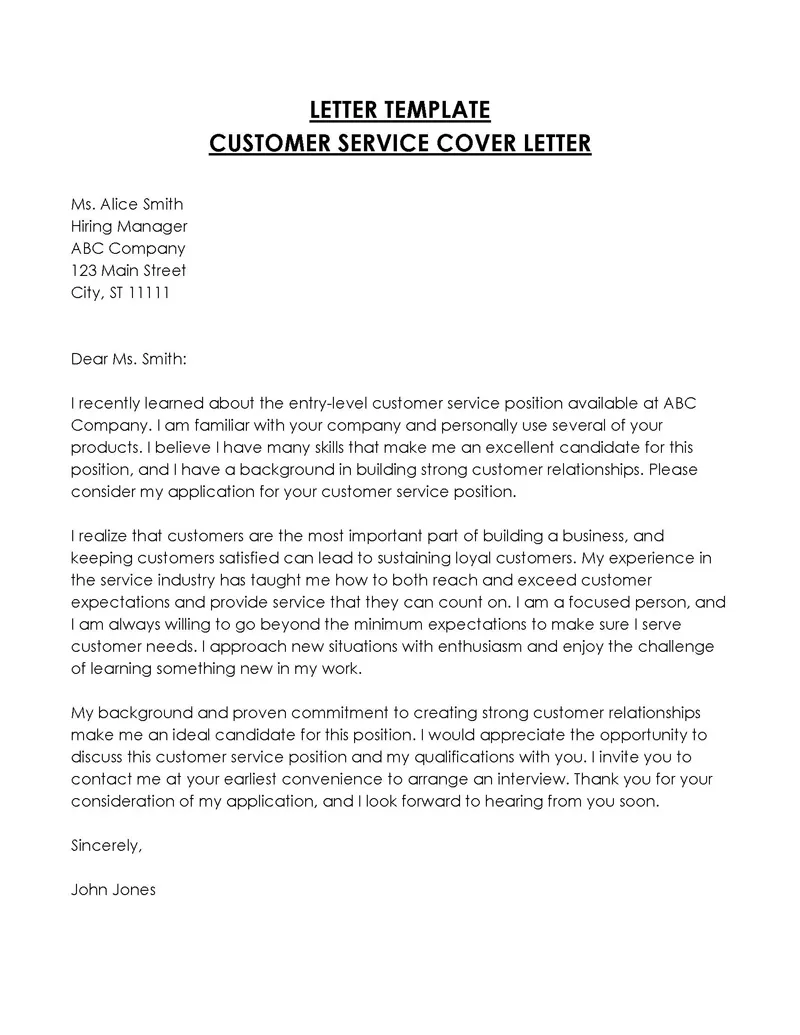
Addressing the hiring manager by name is a crucial step. If possible, find out the name of the person who will be reviewing applications. This shows that you’ve put in the effort to research the company. If you can’t find a specific name, use a professional greeting such as “Dear Hiring Manager.” Avoid generic greetings such as “To Whom It May Concern.” If you are unsure, always lean towards a more general professional greeting than an impersonal one.
Crafting a Compelling Opening
Your opening paragraph is your chance to grab the hiring manager’s attention. Instead of simply stating that you are applying for the job, start with a strong hook. Mention a key skill, a relevant achievement, or express your enthusiasm for the company. Briefly state the position you’re applying for and where you saw the advertisement. Make your opening statement memorable and create a sense of excitement about what’s to come in the rest of your letter. A captivating start encourages the reader to continue.
Showcasing Relevant Experience
In the body of your cover letter, demonstrate your experience. Select the experiences that directly relate to the customer service role. Give examples of how you have excelled in previous positions, highlighting your accomplishments and the positive impact you had. Use the STAR method (Situation, Task, Action, Result) to structure your examples, providing a clear and concise account of your skills. This method helps demonstrate how you approach and resolve customer service issues.
Quantifying Achievements
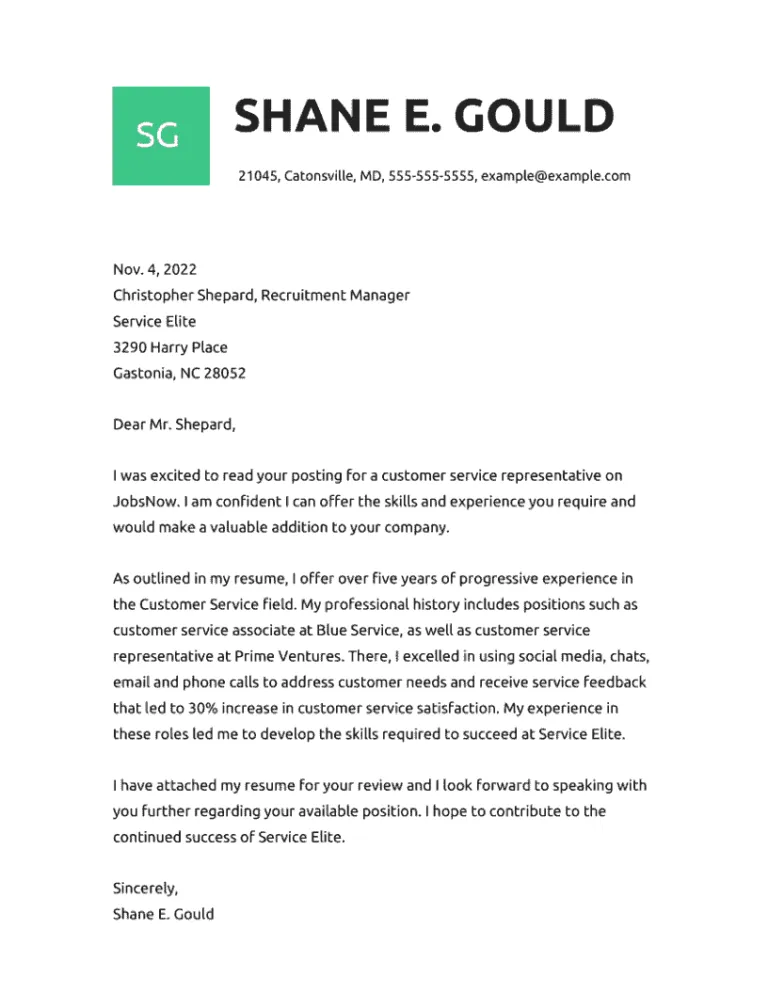
Whenever possible, quantify your achievements. Instead of saying “Improved customer satisfaction,” state “Increased customer satisfaction scores by 15%.” Numbers give your claims more credibility and demonstrate your ability to deliver results. Use specific metrics to showcase your ability to contribute to the company’s goals, whether they are related to customer retention, sales, or issue resolution. Using data-driven examples provides concrete proof of your impact.
Demonstrating Soft Skills
Customer service is as much about soft skills as it is about experience. In your cover letter, highlight your ability to actively listen, empathize, and communicate effectively. Share specific instances where you demonstrated these soft skills. For example, if you’ve successfully de-escalated a difficult customer situation, describe your approach and the positive outcome. Soft skills are the foundation of great customer service.
Expressing Enthusiasm for the Role and Company
Showcase your genuine interest in the specific role and the company. Demonstrate that you’ve done your research by mentioning aspects of the company that excite you, such as their values, products, or commitment to customer service. Explain why you are a good fit for the company culture. Your enthusiasm will make your application more memorable and will help demonstrate that you are a good fit for the role and the team.
Writing a Strong Closing
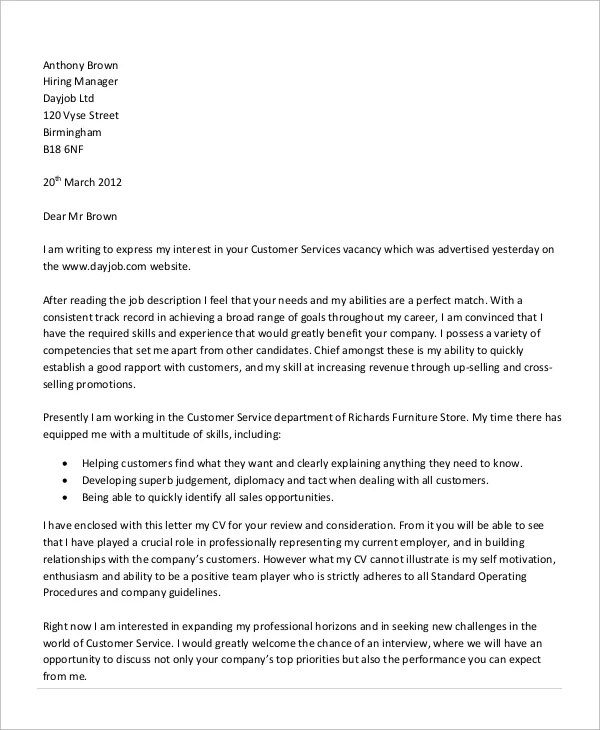
Conclude your cover letter with a confident call to action. Reiterate your interest in the position, and express your eagerness to discuss your qualifications further in an interview. Thank the hiring manager for their time and consideration. You might also include a brief statement about your availability for an interview. End with a professional closing, such as “Sincerely” or “Best regards,” followed by your name.
Formatting and Proofreading Your Cover Letter
Formatting and proofreading are critical steps in the cover letter writing process. A well-formatted and error-free cover letter shows professionalism and attention to detail. Make sure your cover letter presents a polished and professional image.
Formatting Tips
Use a clean and easy-to-read font like Arial or Times New Roman, with a font size between 10 and 12 points. Maintain consistent formatting throughout the document, including consistent spacing, margins, and alignment. Keep your paragraphs concise and well-structured, using bullet points when necessary to highlight key skills or achievements. Aim for a one-page cover letter to maintain the reader’s interest.
Proofreading Checklist
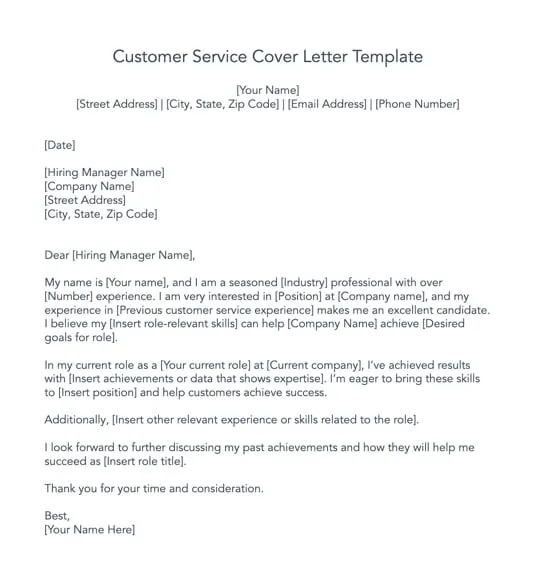
Proofread your cover letter carefully for any typos, grammatical errors, and punctuation mistakes. Check the spelling of the hiring manager’s name and the company’s name. Ensure your contact information is accurate. Read the cover letter aloud to check for clarity and flow. Ask a friend or family member to review your cover letter for a second opinion. Thorough proofreading can eliminate any negative impact of errors on your application.
Customizing Your Cover Letter
A generic cover letter is unlikely to impress hiring managers. Take the time to customize your cover letter for each job application. Tailoring shows that you’ve taken the time to research the role and company and that you’re truly interested in the opportunity. This increases your chances of getting noticed.
Tailoring to the Specific Job Description
Carefully review the job description and identify the key skills and requirements the employer is seeking. Highlight the experiences and skills in your resume that match those requirements. Use keywords from the job description in your cover letter to demonstrate that you possess the skills and abilities the company needs. The more closely your letter aligns with the job description, the better your chances of landing an interview.
Researching the Company
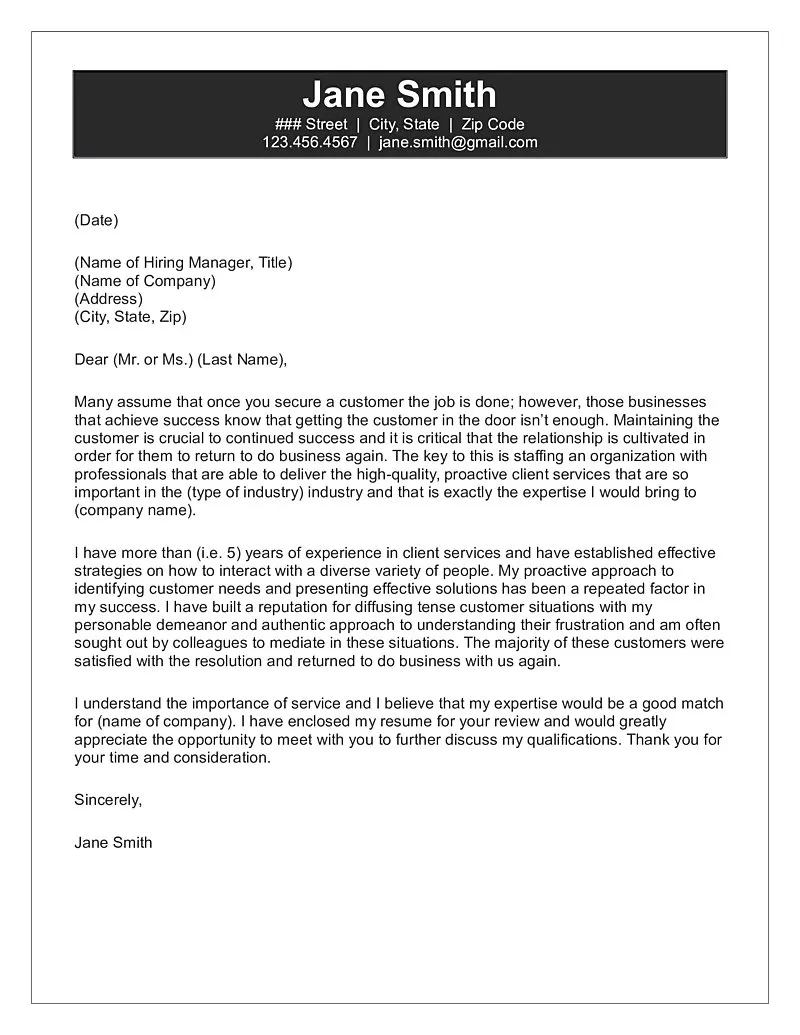
Research the company’s website, social media profiles, and any other available information. Understand their mission, values, and products or services. Tailor your cover letter to reflect your understanding of the company and your genuine interest in working there. Mentioning specific aspects of the company that you admire or align with your values will demonstrate your interest and help you stand out.
Avoiding Common Mistakes
Avoid common mistakes that can damage your chances of getting an interview. These errors can signal a lack of attention to detail or interest in the position. Addressing common pitfalls will strengthen your application.
Generic Cover Letters
Do not send the same cover letter to every job application. Generic cover letters often fail to capture the hiring manager’s attention. Tailor your letter to each specific job and demonstrate that you have the required skills and a genuine interest in the company. Focus on how your background aligns with the specific needs of each role.
Typos and Grammatical Errors
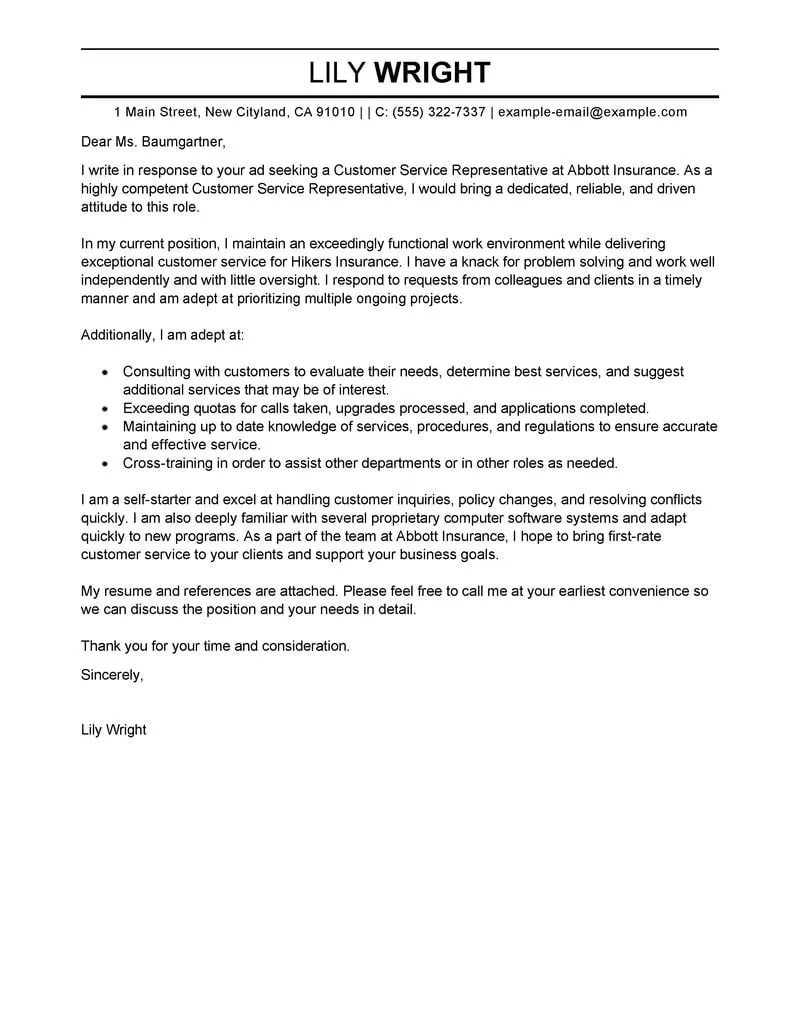
Typos and grammatical errors can create a negative impression. Always proofread your cover letter carefully before submitting it. Errors suggest a lack of attention to detail. Use grammar-checking tools and ask a friend or family member to review your letter for any mistakes. A well-edited cover letter reflects positively on your professionalism.
In conclusion, a well-crafted customer service cover letter is essential for landing your dream job. By following the tips outlined in this guide, you can create a cover letter that effectively showcases your skills, experience, and enthusiasm. Make sure to tailor your cover letter to each job and always proofread carefully. Good luck!
